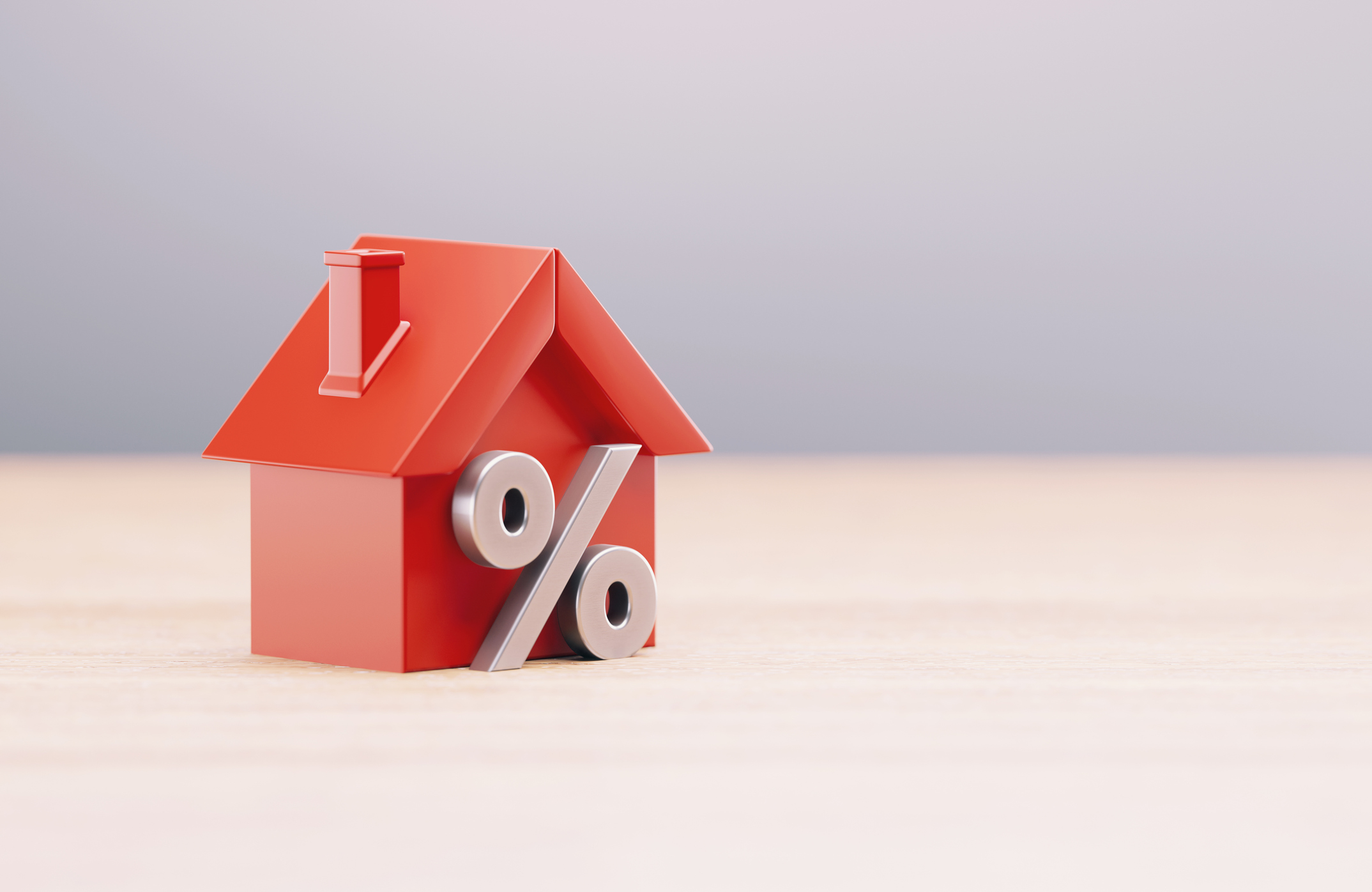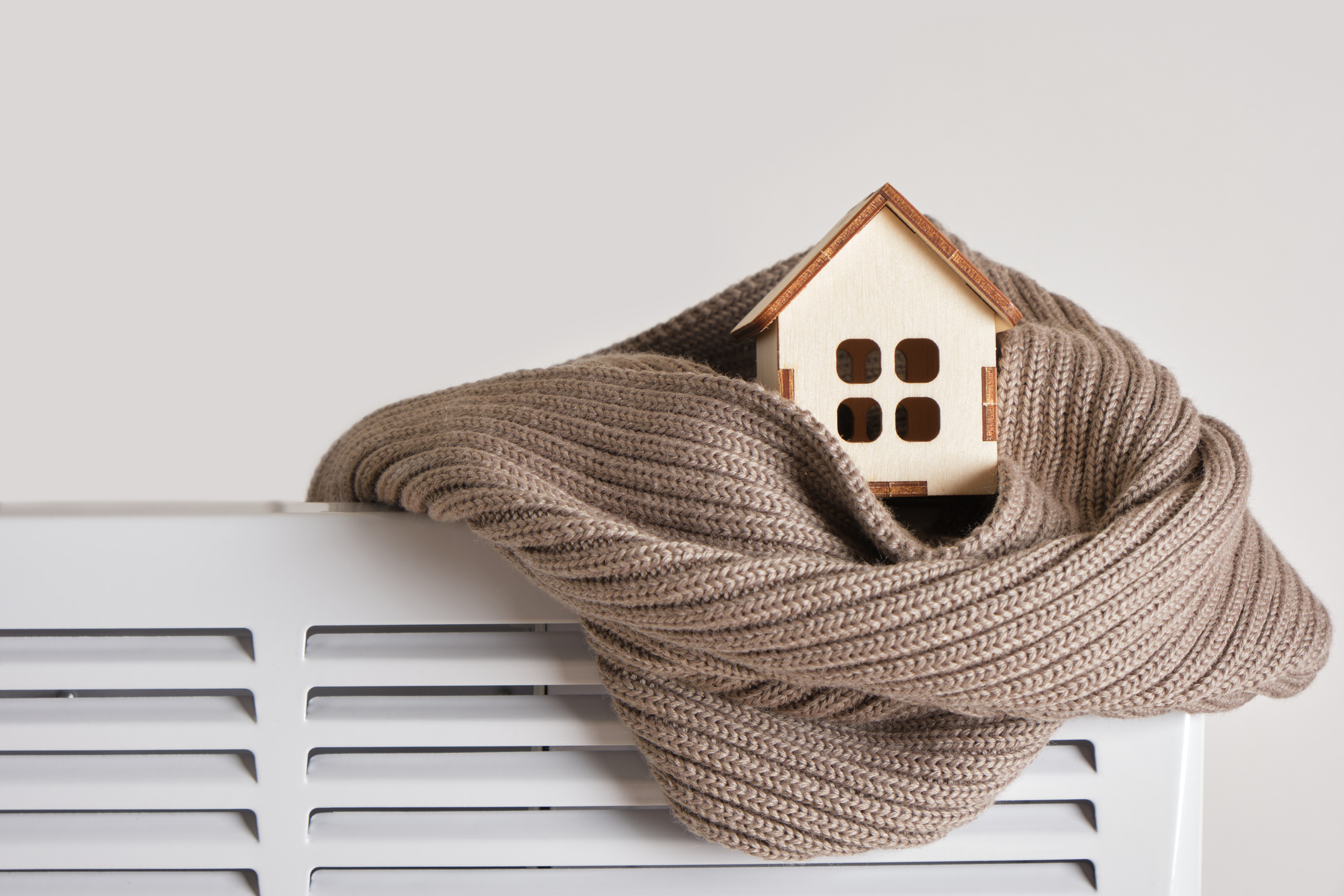Your Guide to the Housing Market in 2024
The challenging housing market conditions that dominated 2023 are easing, but buyers and sellers must take action to stay ahead.


The housing market took a beating last year. The one-two punch of swelling mortgage rates and record-low home supply dealt a tough blow to many aspiring home buyers in 2023. Just ask Drew and Lauren Coppel of Herndon, Va. The couple, who purchased their current townhome in October 2019, were looking to buy a larger house toward the beginning of last year but were reluctant to let go of their 30-year mortgage rate of 2.899%, which they scored by refinancing in 2021. When mortgage rates rose above 6.5% midyear, the Coppels decided to put their house search on ice.
“We’re going to wait for rates to come back down,” says Lauren. “We’ll probably wait for them to drop below 6% so that we can get more home for our money.” In the meantime, they’re going to beef up their down payment savings, zero in on what home features matter most to them, and research neighborhoods they want to live in.
Many would-be home buyers had the same debate last year. Mortgage rates rose from 6.48% in January 2023 to a 23- year high of 7.79% at the end of October, creating an affordability crunch for a large percentage of house hunters. Only 15.5% of the homes for sale in 2023 were considered “affordable,” meaning the estimated mortgage payment amounted to no more than 30% of the county’s median household income, according to Redfin, an online real estate brokerage.
From just $107.88 $24.99 for Kiplinger Personal Finance
Become a smarter, better informed investor. Subscribe from just $107.88 $24.99, plus get up to 4 Special Issues

Sign up for Kiplinger’s Free Newsletters
Profit and prosper with the best of expert advice on investing, taxes, retirement, personal finance and more - straight to your e-mail.
Profit and prosper with the best of expert advice - straight to your e-mail.
Meanwhile, homeowners who considered selling in 2023 experienced the “lock-in effect,” afraid to part with the low mortgage rates they grabbed during the pandemic, says Danielle Hale, chief economist of Realtor.com. According to a Redfin analysis of third-quarter 2023 data from the Federal Housing Finance Agency, nearly 80% of homeowners with mortgages reported that they had a mortgage rate below 5%, approximately 60% reported an interest rate below 4%, and 22.6% said they had an interest rate under 3%.
The result: “2023 was the year of the frozen housing market,” Hale says. Nicole Bachaud, a senior economist at Zillow, agrees. “Home sales fell off a cliff,” Bachaud says. In 2023, sales of existing homes fell 19% from the previous year, to an annual rate of 4.09 million units. According to the National Association of Realtors, it was the steepest drop in 28 years.
Housing market improving
Fortunately for home buyers, the outlook is a bit brighter this year. The two biggest pain points for buyers — high mortgage rates and a dearth of homes for sale — have already begun to improve. In early February, the average 30-year mortgage rate was 6.63%, according to Freddie Mac. Home supply is also growing: In December 2023, there were 9.1% more newly listed homes compared with December 2022, according to Realtor.com data.
More good news for buyers: Housing market forecasts from Realtor.com, Redfin and Zillow all project that mortgage rates will fall this year, with 30-year interest rates settling around 6.5% at the end of 2024. The Mortgage Bankers Association projects an even bigger dip, predicting 30-year rates will fall to 6% by the year’s end.
Of course, those decreases won’t bring dramatic changes in affordability. With a $300,000, 30-year loan, a 7% interest rate would result in a monthly mortgage payment of $1,996. With a 6.5% rate, the payment would fall to $1,896 — a difference of only $100. But even small breaks can provide relief for price-conscious home buyers.
As for home prices, Redfin says median sale prices for existing homes will fall 1% in the second and third quarters compared with the same quarters in 2023. Realtor.com economists also predict a modest decline, forecasting that median prices will drop 1.7% over the course of the year.
The market is picking up for new-home sales, too, Bachaud says. Single-family housing starts — a monthly metric showing the number of ground-breakings for new residential houses — climbed to a seasonally adjusted annual rate of 1,143,000 in November 2023, up 18% from the previous month, according to data from the U.S. Census Bureau and the Department of Housing and Urban Development. Last December, the Mortgage Bankers Association predicted a 10% jump in new-home sales in 2024.
The hottest (and coldest) markets in 2024
Those predictions, though, are broad strokes; real estate trends can vary widely by market.
“The top growth areas for home prices this year are going to be in the Midwest and Northeast,” says Realtor.com’s Hale. Realtor.com forecasts that in Toledo, existing-home sales will surge 14% and home prices will rise 8.3% this year. Rochester, N.Y., is also positioned for above-average home price gains of 10.4%.
Meanwhile, the listing site predicts that home prices will fall significantly in Austin (–12.2%), St. Louis (–11.7%), Dallas (– 8.4%) and Denver (–5.1%). “These are cities that thrived during the pandemic, and we’re not going to see as many people flocking to them this year,” Hale says.
Daryl Fairweather, chief economist at Redfin, predicts that home prices will decline substantially in parts of coastal Florida, such as North Port and Cape Coral. “Rising home insurance costs are giving a lot of prospective buyers there pause,” she says. According to the Insurance Information Institute and CNN, the average home insurance policy in Florida has shot up 102% over the past three years, reaching $6,000 in 2023 — three times more than the national average.
Tips for buyers
The days of ruthless bidding wars, record-high home price growth and soaring mortgage rates appear to be behind us — at least for this year. That means buyers can expect some improvements in the coming months with respect to borrowing costs and home supply. By Redfin’s measurements, there will be an estimated 4.3 million home sales in 2024, a 5% year-over-year increase. Here’s how buyers can succeed in this year’s market.
Stay on top of new listings. Although inventory is improving, homes are still selling at a fairly brisk pace. In December 2023, properties typically sold in just 29 days, according to NAR. Turnkey homes, in particular, often fly off the shelves. To help ensure that you have a shot at homes that fit your criteria, closely monitor new listings. Realtor.com, Redfin and Zillow let you sign up for real-time notifications of new property listings, allowing you to filter results based on zip code, price range, the number of bedrooms and bathrooms, and other home features.
Find an agent who specializes in your market. There’s no shortage of real estate agents. According to the Association of Real Estate License Law Officials, more than 3 million real estate licensees are active in the U.S. Finding an agent who knows your market like the back of their hand is a must.
You can search for active agents in your area using an online directory such as the one at Homes.com, which shows an agent’s years of experience, typical price range of homes the agent has helped to buy or sell in the past five years, and closed sales volume in the previous five years. An agent who has a finger on the pulse of your market can “help you understand how national trends are playing out in your area,” says Hale.
There’s no reason to go it alone. “You don’t need an agent to find listings anymore, but you need an agent to negotiate and provide advice” throughout the home-buying process, says Lisa Chajet, a real estate broker in Manhattan. Plus, the seller typically pays the commission of a buyer’s agent at closing. That custom might be changing, though, after NAR and several brokerages lost lawsuits in 2023 that found the arrangement inflates commission rates. (NAR has said it plans to appeal the verdict.)
Look into down payment assistance. The typical down payment for a single-family home loan was 9.2% of the median purchase price in the third quarter of 2023, according to real estate analyst firm ATTOM Data Solutions. Moreover, the typical down payment for first-time buyers who purchased a home between July 2022 and June 2023 was 8%, according to NAR.
But buyers who put down less than 20% for a conventional loan have to pay private mortgage insurance, an extra monthly fee ranging from about 0.3% to 1.15% of the loan amount.
If you’re struggling to put together a down payment, take the time to explore down payment assistance programs, which help eligible home buyers cover the up-front costs of purchasing a home. Down payment assistance can come in the form of grants, low-interest loans, deferred loans or forgivable loans, providing funds to cover a portion or all of a borrower’s down payment.
You can use the Down Payment Resource search tool to see whether you are eligible for down payment assistance. “Many down payment assistance programs have income restrictions and other red tape, such as the borrower must be a first-time home buyer,” says Melissa Cohn, regional vice president at William Raveis Mortgage, based in Palm Beach, Fla.
Get your financing ducks in a row. Most buyers take out a mortgage to purchase a home. The average loan size for new homes in December 2023 was $405,368, a slight increase from November, the Mortgage Bankers Association reports.
Getting preapproved for a mortgage will show you what size loan you are eligible for, helping you focus your home search.
Because interest rates can vary by lender, it’s worth getting multiple quotes. According to a recent LendingTree study, borrowers in the nation’s 50 largest metro areas could save an average of about $84,300 over the life of their loan by shopping for the best mortgage rate.
Don’t buy down your mortgage rate. Paying mortgage points — also referred to as discount points or prepaid interest points — at closing gets you a lower mortgage rate. Typically, the cost of one point is equivalent to 1% of the loan amount, with each point reducing the interest rate by about 0.25 percentage point. But with the Mortgage Bankers Association predicting that mortgage rates will fall to 4.6% by the fourth quarter of 2025, Cohn discourages buyers from paying points in 2024. “Don’t waste your money, knowing that you’re probably going to refinance sometime in the next two years,” she says.
“We had to keep in mind that mortgage rates aren’t permanent,” says Angie Carmody, who, with her husband, Mike Carmody, took out a 30-year fixed-rate loan at 6.625% when they purchased a house for $651,500 in Reisterstown, Md., last April. They plan on refinancing when rates fall.
Avoid getting a mortgage rate lock extension. Mortgage rates can change daily and sometimes even hourly. If you get a “rate lock,” your rate won’t change between the time you lock in the rate and closing, so long as you close on a home within a specified time frame — typically 30, 45 or 60 days. Many lenders offer 30- or 45-day rate locks free but charge a fee for extensions because they need to renegotiate the interest rate with the investor that you already committed to.
Generally, a rate lock extension costs between 0.25% and 1% of the loan amount, according to Bankrate. For a $400,000 mortgage, that’s anywhere from $1,000 to $4,000. With mortgage rates projected to decline this year, Cohn discourages buyers from shelling out for a longer rate lock. “Rates may not go down in a straight line; there will be some bumps in the road.
But the general direction of rates this year is a downward trajectory, so I wouldn’t spend money on a rate lock,” she says.
Make your offer shine. There are several ways you can make a bid stand out in this market. One tactic is to make a higher down payment (think over 20%), which gives the seller greater reassurance that your mortgage will get approved. That’s the strategy Dena and Ryan Blaustein used to win their four-bedroom house in Olney, Md., last year for the full list price of $768,000. “The seller received other offers, but we were told they chose ours because we were putting more money down,” says Dena. The couple made a 35% down payment on a 30-year fixed-rate loan with a 5.99% interest rate.
Have a home inspection contingency. During the pandemic, when homes were selling at breakneck speed, many buyers waived their right to an inspection, offering to purchase homes as-is—an inherently risky approach. But buyers today have more leverage to require home inspection contingencies. A home inspection runs between $281 and $403, on average, according to data from home improvement resource Angi (formerly Angie’s List). The cost depends on the location, size and age of the home and whether any specialty inspection services are ordered. Usually, the buyer pays for the inspection up front.
Sammi Meyers and Ray Del Giudice are glad they included an inspection contingency when they made an offer last summer on a three-bedroom Philadelphia townhome that was built in 1940. “Our contingency stated that we wouldn’t ask for anything to be fixed that cost under $2,000,” Sammi says. However, the inspection revealed that the deck needed major repairs. Their agent, Seth Lejeune, used the contingency to negotiate a seller’s credit of $9,250 toward the couple’s closing costs.
Don’t rule out new construction. Many buyers make the mistake of believing they can’t afford to buy a brand-new home, says Allen Snow, an associate broker and vice president of developer services and marketing at Atlanta Fine Homes in Atlanta. But in today’s market, a swath of developers are wooing buyers by offering incentives such as mortgage rate buy-downs or closing cost assistance. “Some buyers who are purchasing new townhomes are getting up to $20,000 in credits to buy down their mortgage rate,” Snow says.
Chajet is also seeing concessions play out in New York. “I tell buyers, ‘Don’t look at the price that you see advertised for a new development, because it’s probably inflated when you consider the concessions that are being offered,’ ” she says.
Tips for sellers
Don’t overvalue your home. The Achilles’ heel for many sellers is overestimating their property’s value. “A cocky seller is not going to get anywhere in this market,” Chajet says. “A lot of buyers are very price-sensitive right now.” If you price your home too high above its market value, your listing could draw little foot traffic.
Work with a seasoned listing agent in your area who can help you pinpoint the right asking price. Look for agents who sell a lot of homes in your neighborhood and have firsthand knowledge of what prices lead to sales — and, equally important, what prices cause a listing to languish — where you live.
Make a great first impression. Curb appeal goes a long way. A study by Michigan State University found that a well-landscaped exterior increases a home’s perceived value by 5% to 11%. That jibes with a 2023 NAR survey that showed 92% of real estate agents suggest that sellers improve their home’s curb appeal before putting the property up for sale.
It’s okay to go small: Standard lawn-care service yields a 217% return on investment, according to NAR’s 2023 Remodeling Impact Report. Fresh paint throughout your home can also have a big impact, Lejeune says. “When in doubt, paint,” he says.
“The return on investment is indisputable.” Select a neutral color, such as an off-white, to create a blank canvas that can help buyers envision themselves living there.
Make sure to highlight these kinds of home improvements in your listing’s property description. And always get professional photographs for your listing — according to one study of the housing market in Chicago, listings with professional photos sell 32% faster than other homes.
Install smart home technology. Nearly eight in 10 home buyers say they’re willing to pay more for a home with smart devices, a recent Security.org survey found. Consider installing affordable devices, such as a video doorbell or smart thermostat, rather than dropping a bundle of cash on an internet-connected toilet. Ask your agent to point out these smart features during open houses.
Provide a home warranty. If your home has older appliances, offering buyers a one-year warranty can provide peace of mind. One-year home warranties are inexpensive, typically running between $264 and $1,425, according to BobVila.com.
Although the seller didn’t offer one, the Blausteins purchased a home warranty because they were buying a house built in 1972 — and it paid off. “We’ve already had to put on a new roof, our basement flooded, and our heat pump broke, so we’ve gotten a full dose of homeownership already,” Dena says. “Our home warranty covered many of our expenses.”
Offer concessions. Sellers gave concessions such as closing cost assistance or mortgage rate buy-downs to buyers in 35% of U.S. home sales during the three months that ended October 31, 2023, the most recent Redfin data available at press time. “Seller concessions can move the needle for many listings,” Snow says.
Upgrade your kitchen amenities. Luxury kitchen appliances can make your home more appealing to today’s buyers. A 2023 Zillow survey found that listings with chef-friendly features, such as steam ovens, pizza ovens and professional-grade appliances, sell for as much as 5.3% more than similar homes without them, adding up to about $17,400 in a typical home sale.
Blitz social media. Many of today’s prospective buyers, especially younger house hunters, use social media to scout new listings. When interviewing listing agents, ask about their social media marketing strategy. If they promote your home on platforms such as Facebook, Instagram, X (formerly Twitter) and TikTok, the listing may reach more prospective buyers.
Consider becoming a landlord. If you have a low interest rate on your current home loan, it may make sense to turn your home into a rental property instead of selling it when you buy your next place. Depending on your local rental market, it could generate enough income to offset the costs of your new mortgage.
Make the most of a home inspection
An inspection contingency can protect you from buying a potential money pit. Take these steps to ensure a solid inspection.
Hire a qualified inspector. You can ask your real estate agent for a home inspector recommendation, or you can search for one yourself. To find a qualified inspector in your area, consider using the directories at the American Society of Home Inspectors and the International Association of Certified Home Inspectors; the latter specifies the additional services an inspector provides, such as performing tests for radon, mold or lead. An inspector’s membership in one of these trade organizations is a sign of credibility.
Attend the inspection (with your agent). This step may sound like a no-brainer, but some buyers don’t go to the inspection. Attending it allows you to ask questions about issues and learn about the inner workings of your potential home.
Lean on your agent to help you decipher the inspection report. A good home inspector is thorough, outlining their findings in a written report that’s often dozens of pages long and quite technical. Your agent can help you interpret the results and determine whether it makes sense to ask the seller to make certain repairs. (Legally, the seller may be required to make repairs if the home has structural defects or building code violations.)
Negotiate repairs or a price reduction. Armed with the inspection report, your agent will go to bat for you and negotiate with the seller to make repairs that you request. The seller may agree to fix the issues or offer a credit at closing — or the seller may deny your requests, in which your inspection contingency would give the option of walking away.
Plan for future repairs. Use the report to earmark funds for repairs in the near future. Also, experts suggest setting aside 1% to 4% of your home’s value each year for home maintenance.
Home sale prices: 50 largest metro areas
Formerly hot markets, such as Austin, Texas, and Jacksonville, Fla., cooled last year, while some markets in the Midwest and Northeast posted healthy gains. Data are as of the third quarter of 2023.
| METRO AREA | Median home sale price, USD | Year-over-year % change* |
|---|---|---|
| Atlanta-Sandy Springs-Marietta, GA | $379,200 | 2.2% |
| Austin-Round Rock, TX | 485,700 | -10.3 |
| Baltimore-Columbia-Towson, MD | 406,300 | 4.0 |
| Birmingham-Hoover, AL | 310,200 | 0.7 |
| Boston-Cambridge-Newton, MA-NH | 745,100 | 6.6 |
| Buffalo-Cheektowaga-Niagara Falls, NY | 260,600 | 6.9 |
| Charlotte-Concord-Gastonia, NC-SC | 406,900 | 1.6 |
| Chicago-Naperville-Elgin, IL-IN-WI | 365,100 | 4.5 |
| Cincinnati, OH-KY-IN | 290,330 | 9.3 |
| Cleveland-Elyria, OH | 236,700 | 4.0 |
| Columbus, OH | 323,400 | 3.6 |
| Dallas-Fort Worth-Arlington, TX | 385,700 | -1.1 |
| Denver-Aurora-Lakewood, CO | 673,000 | 1.1 |
| Detroit-Warren-Dearborn, MI | 266,600 | 0.2 |
| Hartford-West Hartford-East Hartford, CT | 375,100 | 9.0 |
| Houston-The Woodlands-Sugar Land, TX | 345,600 | -1.1 |
| Indianapolis-Carmel-Anderson, IN | 316,400 | 5 |
| Jacksonville, FL | 390,00 | 2.0 |
| Kansas City, MO-KS | 328,800 | 4.5 |
| Las Vegas-Henderson-Paradise, NV | 460,600 | 0.6 |
| Los Angeles-Long Beach-Glendale, CA | 897,600 | 1.4 |
| Louisville-Jefferson County, KY-IN | 271,900 | 3.1 |
| Memphis, TN-MS-AR | 280,000 | 1.2 |
| Miami-Fort Lauderdale-West Palm Beach, FL | 602,000 | 5.7 |
| Milwaukee-Waukesha-West Allis, WI | 386,100 | 7.8 |
| Minneapolis-St. Paul-Bloomington, MN-WI | 387,900 | 1.8 |
| Nashville-Davidson-Murfreesboro-Franklin, TN | 413,600 | 1.3 |
| New Orleans-Metairie, LA | 281,500 | 0.9 |
| New York-Newark-Jersey City, NY-NJ-PA | 665,000 | 6.0 |
| Oklahoma City, OK | 251,200 | 6.8 |
| Orlando-Kissimmee-Sanford, FL | 436,500 | 2.7 |
| Philadelphia-Camden-Wilmington, PA-NJ-DE-MD | 368,500 | 5.5 |
| Phoenix-Mesa-Scottsdale, AZ | 467,200 | -1.5 |
| Portland-Vancouver-Hillsboro, OR-WA | 593,400 | -0.2 |
| Providence-Warwick, RI-MA | 480,100 | 5.8 |
| Raleigh, NC | 478,600 | 3.9 |
| Richmond, VA | 401,700 | 4.5 |
| Riverside-San Bernardino-Ontario, CA | 565,000 | -0.4 |
| Rochester, NY | 247,000 | 10.3 |
| Sacramento-Roseville-Arden-Arcade, CA | 542,000 | 1.8 |
| Salt Lake City, UT | 554,500 | -1.2 |
| San Antonio-New Braunfels, TX | 332,200 | -3.1 |
| San Diego-Carlsbad, CA | 978,500 | 8.7 |
| San Francisco-Oakland-Hayward, CA | 1,300,000 | 1.6 |
| San Jose-Sunnyvale-Santa Clara, CA | 1,850,000 | 9.6 |
| Seattle-Tacoma-Bellevue, WA | 744,300 | 0.4 |
| St. Louis, MO-IL | 268,600 | 4.6 |
| Tampa-St. Petersburg-Clearwater, FL | 415,000 | 2.4 |
| Virginia Beach-Norfolk-Newport News, VA-NC | 344,500 | 5.3 |
| Washington-Arlington-Alexandria, DC-VA-MD-WV | 612,600 | 5.4 |
*As of third quarter 2023. SOURCE: National Association of Realtors
Read More
Profit and prosper with the best of Kiplinger's advice on investing, taxes, retirement, personal finance and much more. Delivered daily. Enter your email in the box and click Sign Me Up.

Daniel Bortz is the Personal Finance Editor at AARP and is based in Arlington, Va. His freelance work has been published by The New York Times, The Washington Post, Consumer Reports, Newsweek, and Money magazine, among others.
-
 5 Types of Gifts the IRS Won’t Tax: Even If They’re Big
5 Types of Gifts the IRS Won’t Tax: Even If They’re BigGift Tax Several categories of gifts don’t count toward annual gift tax limits. Here's what you need to know.
-
 The 'Scrooge' Strategy: How to Turn Your Old Junk Into a Tax Deduction
The 'Scrooge' Strategy: How to Turn Your Old Junk Into a Tax DeductionTax Deductions We break down the IRS rules for non-cash charitable contributions. Plus, here's a handy checklist before you donate to charity this year.
-
 IRS Says You Made a Tax Return Mistake? A New Law Could Help You Fight Back
IRS Says You Made a Tax Return Mistake? A New Law Could Help You Fight BackTax Law Updated taxpayer protections change what the IRS must explain on error notices and how long you have to respond.
-
 4 Strategies for Older Adults to Cut Property Taxes
4 Strategies for Older Adults to Cut Property TaxesBefore you settle your next property tax bill, make sure you're taking full advantage of these tax breaks for older homeowners across the US.
-
 5 Simple Fixes to Save on Heat Bills This Winter
5 Simple Fixes to Save on Heat Bills This WinterWith fuel prices expected to rise 10% or more this winter, making your home more energy efficient will really pay off.
-
 Credit Score News Could Help First-Time Homebuyers
Credit Score News Could Help First-Time HomebuyersLenders who sell mortgages to Fannie Mae and Freddie Mac used to only be able to use FICO for loan qualification. Now there's VantageScore, owned by the three major credit bureaus.
-
 Four Military Benefits That Have Helped My Family
Four Military Benefits That Have Helped My FamilyMilitary life can be challenging for servicemembers and their families, but they're offered some significant financial benefits to help cushion the blow.
-
 Protect Your Retirement From Extreme Weather Events
Protect Your Retirement From Extreme Weather EventsA rising tide of storms, fires, and heat is impacting retirees. Here's what you can do about it.
-
 To Downsize or Not to Downsize? That is the Retirement Question
To Downsize or Not to Downsize? That is the Retirement QuestionWhere to Retire For some retirees, a bigger home is better.
-
 A New Guide to Choosing Where to Retire
A New Guide to Choosing Where to RetireWhere to Retire A comprehensive guide to deciding where is the best place for you to retire.
-
 Watch Out for These Travel Scams This Summer
Watch Out for These Travel Scams This SummerIdentity Theft These travel scams are easy to fall for and could wreck your summer. Take a moment to read up on the warning signs and simple ways to protect yourself.